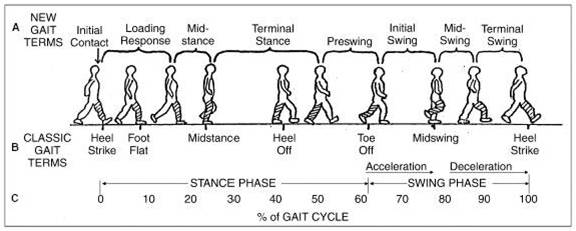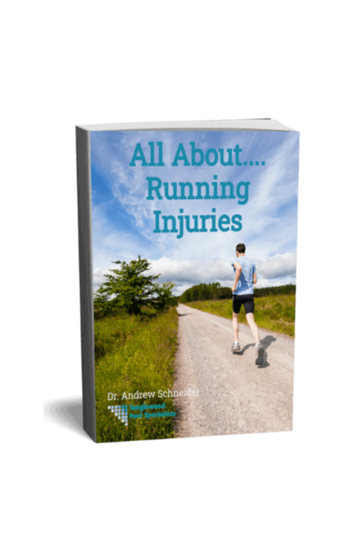
For those of you who are really starting to get into running, you’ve probably heard about a gait analysis. This is an important test that can highlight the way your body moves when you step. It can also help you choose sneakers that will keep you from getting hurt while you train.
So, have you ever wondered what goes on during a gait analysis? Will some shoe salesman just watch you walk and then tell you which shoes he or she wants you to buy?
If you’re in the right place (like your Houston podiatrist’s office or a reputable running store) here’s what to expect from a legitimate gait analysis.
At-Home Gait Analysis
Before you engage in an in-office analysis, you can try to take note of imbalances on your own. One quick way to tell how your body moves is to look at the wear pattern on your sneakers. Check to see if one spot on the sole is more worn than others, or if there are differences in wear between the left and right sneaker soles. These can indicate that your body is not moving in rhythm and that you may need our team to take a closer look at your gait with a formal gait analysis.
The Step-By-Step Guide to Gait Analysis in Office
To begin, we start a gait analysis by examining the way you stand and walk. During this observation, we'll notice the angle of your hips, knees and ankles while you move. And those subtle movements matter, especially for runners.
Why is that the case? Dr. Kristin Whitney of Boston's Injured Runners Clinic says these observations can prevent injuries. “Gait analysis is a real-time way of evaluating a runner’s movement patterns,” she notes. This means, "We can work with them on small changes that can help them avoid injury and improve their performance,” she concludes.
Now, after the on-ground observations, we'll move you to the treadmill to watch you run. We may use something called a force plate treadmill. It's meant to measure how hard your feet land when you hit the ground. It can also measure the angle at which they land.
With that feedback, we have lots of information to work with. But, in some cases, we may also set up a video camera behind the treadmill. This allows me to capture your gait cycle on film for further review.
What does your gait mean for runners?
Your gait cycle is, quite simply, the continuous, repetitive pattern of how you run or walk. For the purposes of analysis, we can break it down into two parts, the stance and swing phase.
In the Stance phase, our gait analysis will look at the following:
- Heel strike - The point when your heel hits the floor
- Foot flat - The point where the whole of the foot comes into contact with the floor
- Mid stance - Where you transfer weight from the back to the front of your foot
- Toe off - Pushing off with the toes to propel yourself forwards
In the swing phase, we'll be watching your gait analysis for:
- Acceleration - The period of time from toe off to maximum knee flexion
- Mid-swing - The period between maximum knee flexion and the forward movement of the shin bone to a vertical position
- Deceleration - The end of this pase, just before your heel strike
After we've completed my analysis, I'll give you a better idea of the imbalances and abnormalities in your gait. I'll give you the answer to these questions, adapted from the Injured Runners Clinic.
- How are your feet hitting the ground?
- Do your feet and ankles land right below your knees?
- Are you driving forward with your knees?
- Are you using your hips effectively to push yourself forward?
- Does one hip drop slightly when your foot leaves the ground?
- Are you running upright, or do you lean forward slightly?
This information can help you understand what causes you discomfort when you run. But don’t panic when you get your report!! The good news is, we can correct most running abnormalities so that you don’t experience pain or injury! And the first step in that process involves picking the right shoes for how you move.
Choosing the Right Running Shoe for Your Gait

We know that you might want to run your gait analysis straight to your sneaker store. And, while you could present your findings to help you pick your best sneaker. But before you prepare to shop, you may want to hold on for a minute. Because, as it turns out, gait isn't the most important factor to consider when choosing sneaks.
What does matter, then? It may sound too simple but it's true: comfort should be king when it comes to selecting sneaker for running. Of course, there are many studies that will tell you otherwise. But, in our experience, immediate comfort in a pair of shoes (with no need for a breaking-in period) is crucial. In fact, it's a better predictor of proper support than any other factor.
So, my gait analysis will help you determine corrections you can make to your running style. It can also tell you whether you can reduce your injury risk with custom orthotics. But its results don't need to dictate your sneaker style. Instead, we can help make any kind of sneaker work for your unique running style, as long as those shoes feel good on your feet. After all, that's easier to do than it is to make shoes that hurt start to feel good again!
Beyond the Run: Gait Analysis for Houston Athletes
Runners are my most frequent gait analysis subject. But this kind of feedback can help protect other athletes--especially football players--from injuries.
Think of it this way. When we analyze your gait, we can see how your feet push off from the ground (or turf.) This feedback could help me identify how much pressure you put on your toe as you move. In turn, we may prevent you from developing a turf toe injury. The same logic applies to athletes in other sports, where the force of your gait could contribute to overuse injuries.
Ready to get proactive about preventing running or sports injuries? That's why we're here to help! If you haven’t yet received a gait analysis yet, schedule an appointment with Dr. Andrew Schneider today! Or if you've already gotten one, but want to better understand the results, bring in your old exam to our office. We'll happily review the information and help you decide the next best steps to keep you safe when you train.



















